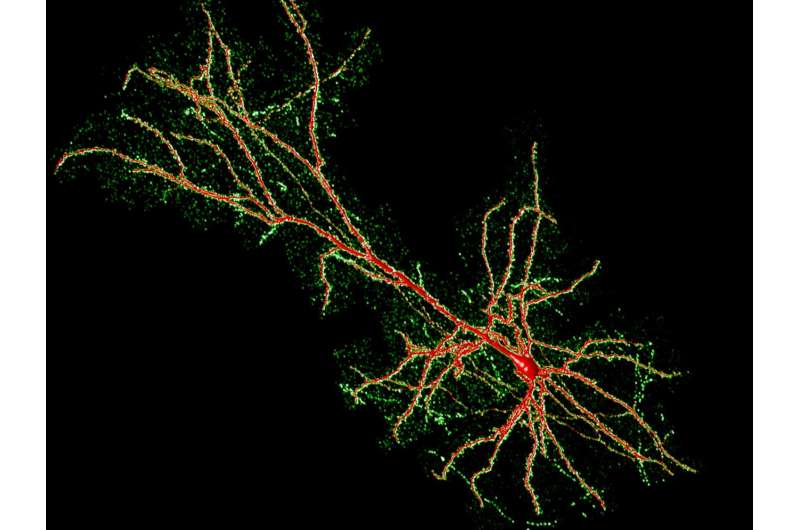A turbo engine for tracing neurons

Putting a turbo engine into an old car gives it an entirely new life—suddenly it can go further, faster. That same idea is now being applied to neuroscience, with a software wrapper that can be used on existing neuron tracing algorithms to boost their ability to handle not just big, but enormous sets of data. The wrapper, called UltraTracer, is highlighted this month in Nature Methods.
"In trying to uncover the diversity of neuron shapes, scale is a very large and increasingly pressing problem," says Hanchuan Peng, Ph.D., Associate Investigator at the Allen Institute for Brain Science. "We need to be able to compare tens of thousands of neuron shapes in order to really understand what they look like, and to use that information to parse individual cell 'types.'"
Peng and his team designed UltraTracer to work with existing neuron tracing algorithms designed by scientists around the world, turbo-charging them to work faster and with larger datasets. In the paper, they describe applying UltraTracer to ten different base tracers and also to any other base tracers in the BigNeuron initiative (bigneuron.org), developed by different people and that used varying techniques to automatically detect the shapes of neurons in three-dimensional image stacks.
The team was able to demonstrate UltraTracer's unique ability to supercharge existing software. Using the Allen Cell Types Database as a biological reference, the software first learned what neurons "should" look like. UltraTracer then made existing algorithms more efficient to handle bigger data sets, and combined several different algorithms in an organic way that made the most of each tracer's strengths.
"With UltraTracer, we are giving new life to neuron tracing algorithms that already exist and making them even more powerful," says Peng. "We can now test how well these algorithms work at very large scales, and make them work better. This will be a crucial step in addressing fundamental questions about cell types in the brain."
More information: Hanchuan Peng et al, Automatic tracing of ultra-volumes of neuronal images, Nature Methods (2017). DOI: 10.1038/nmeth.4233

















